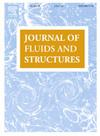Sequential learning based PINNs to overcome temporal domain complexities in unsteady flow past flapping wings
IF 3.5
2区 工程技术
Q1 ENGINEERING, MECHANICAL
引用次数: 0
Abstract
For a data-driven and physics combined modeling of unsteady flow systems with moving immersed boundaries, Sundar et al. (Sundar et al. 2024) introduced an immersed boundary-aware (IBA) framework, combining Physics-Informed Neural Networks (PINNs) and the immersed boundary method (IBM). This approach was beneficial because it avoided case-specific transformations to a body-attached reference frame. Building on this, we now address the challenges of long time integration in velocity reconstruction and pressure recovery by extending this IBA framework with sequential learning strategies. Key difficulties for PINNs in long time integration include temporal sparsity, long temporal domains and rich spectral content. To tackle these, a moving boundary-enabled PINN is developed, proposing two sequential learning strategies: - a time marching with gradual increase in time domain size, training a monolithic PINN and - a time decomposition which divides the temporal domain into smaller segments, training a PINN over each subdomains and combining them together. While the former approach may struggle with error accumulation over long time domains, the latter one, eventually combined with transfer learning, effectively reduces error propagation and computational complexity. The key findings for modeling of incompressible unsteady flows past a flapping airfoil include: - for quasi-periodic flows, the time decomposition approach with preferential spatio-temporal sampling improves accuracy and efficiency for pressure recovery and aerodynamic load reconstruction, and, - for long time domains, decomposing it into smaller temporal segments and employing multiple sub-networks, simplifies the problem ensuring stability and reduced network sizes. This study highlights the limitations of traditional PINNs for long time integration of flow-structure interaction problems and demonstrates the benefits of decomposition-based strategies for addressing error accumulation, computational cost, and complex dynamics.
基于序贯学习的非定常流场扑翼飞行时域复杂性研究
对于具有移动浸入边界的非定常流动系统的数据驱动和物理结合建模,Sundar等人(Sundar et al. 2024)引入了浸入边界感知(IBA)框架,结合了物理信息神经网络(pinn)和浸入边界方法(IBM)。这种方法是有益的,因为它避免了特定于案例的对附加主体的参考框架的转换。在此基础上,我们现在通过使用顺序学习策略扩展IBA框架,解决了在速度重建和压力恢复方面的长期集成挑战。时间稀疏性、长时域和丰富的谱内容是长时间集成的关键问题。为了解决这些问题,开发了一个移动边界支持的PINN,提出了两种顺序学习策略:-随着时域大小逐渐增加的时间行进,训练单个PINN; -将时域分成更小的片段的时间分解,在每个子域上训练一个PINN并将它们组合在一起。前一种方法可能会在长时间域上与错误积累作斗争,而后一种方法最终与迁移学习相结合,有效地减少了错误传播和计算复杂度。对扑翼型不可压缩非定常流场建模的主要发现包括:—对于准周期流,采用优先时空采样的时间分解方法提高了压力恢复和气动载荷重建的准确性和效率;—对于长时间域,将其分解为更小的时间段并采用多个子网络,简化了确保稳定性和减小网络尺寸的问题。本研究强调了传统的pinn在长时间集成流-结构相互作用问题上的局限性,并展示了基于分解的策略在解决误差积累、计算成本和复杂动力学方面的优势。
本文章由计算机程序翻译,如有差异,请以英文原文为准。
求助全文
约1分钟内获得全文
求助全文
来源期刊

Journal of Fluids and Structures
工程技术-工程:机械
CiteScore
6.90
自引率
8.30%
发文量
173
审稿时长
65 days
期刊介绍:
The Journal of Fluids and Structures serves as a focal point and a forum for the exchange of ideas, for the many kinds of specialists and practitioners concerned with fluid–structure interactions and the dynamics of systems related thereto, in any field. One of its aims is to foster the cross–fertilization of ideas, methods and techniques in the various disciplines involved.
The journal publishes papers that present original and significant contributions on all aspects of the mechanical interactions between fluids and solids, regardless of scale.
 求助内容:
求助内容: 应助结果提醒方式:
应助结果提醒方式:


